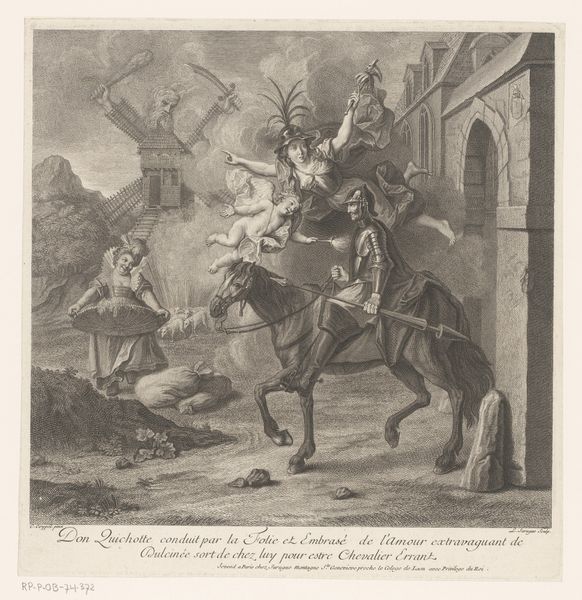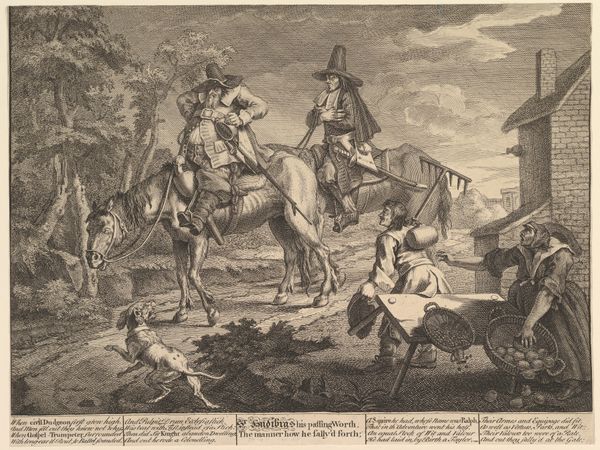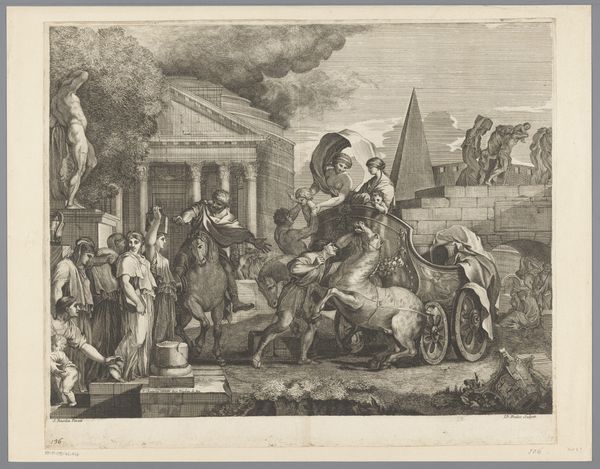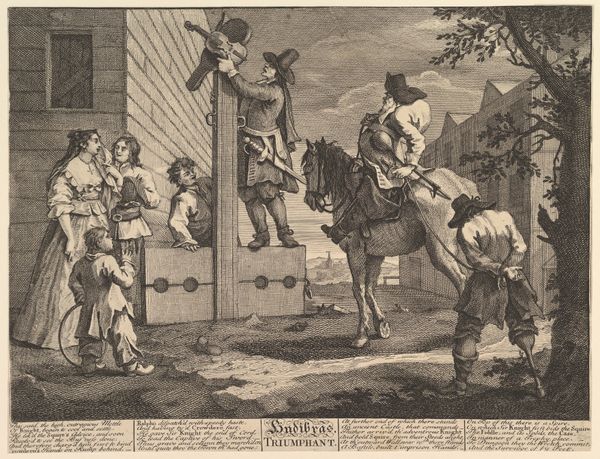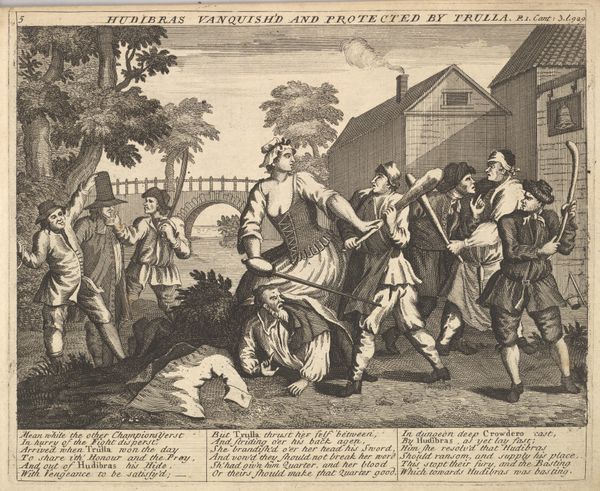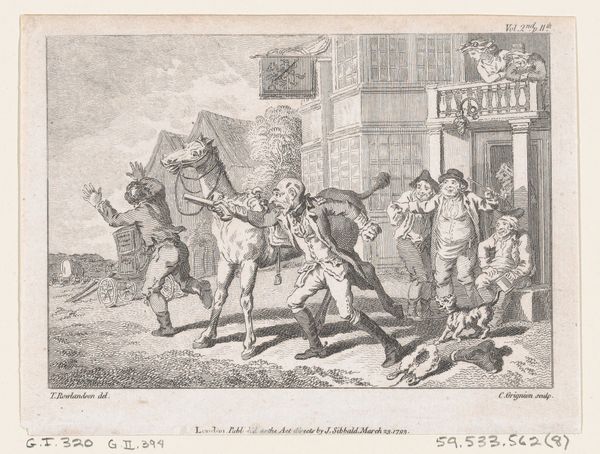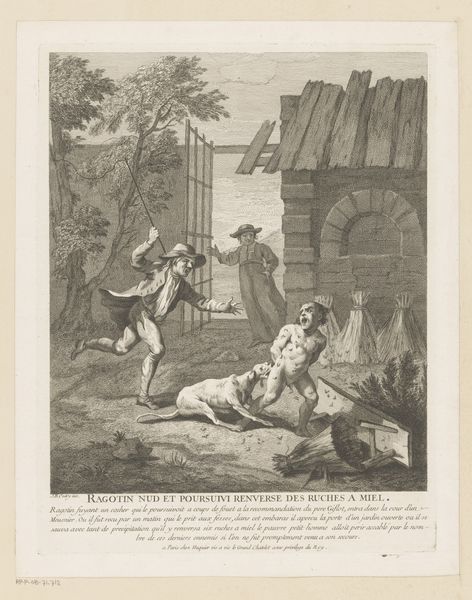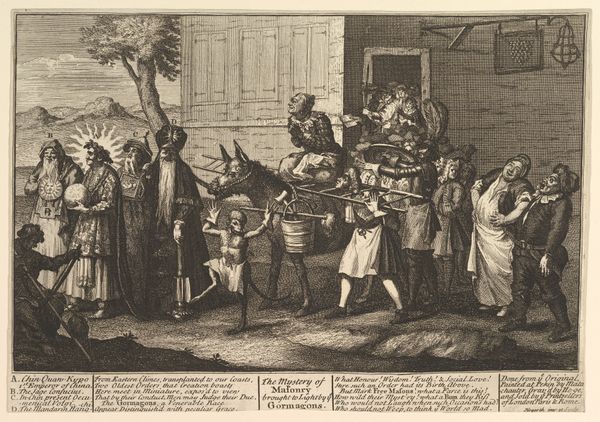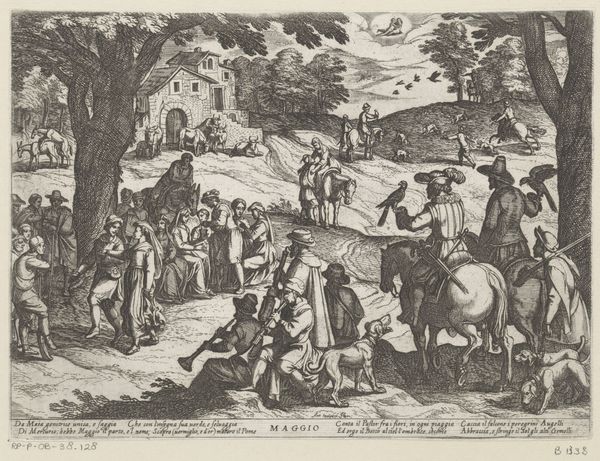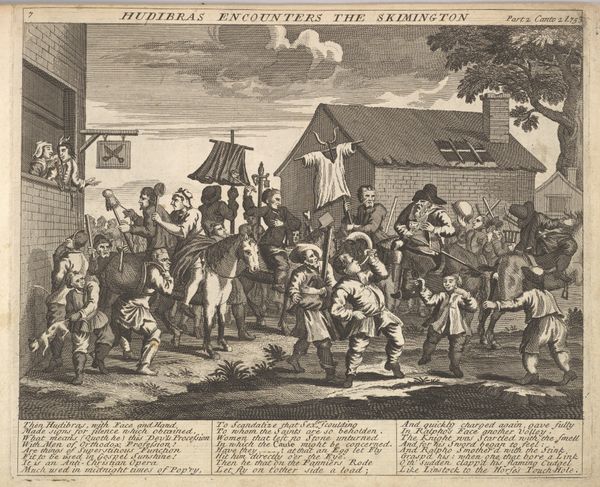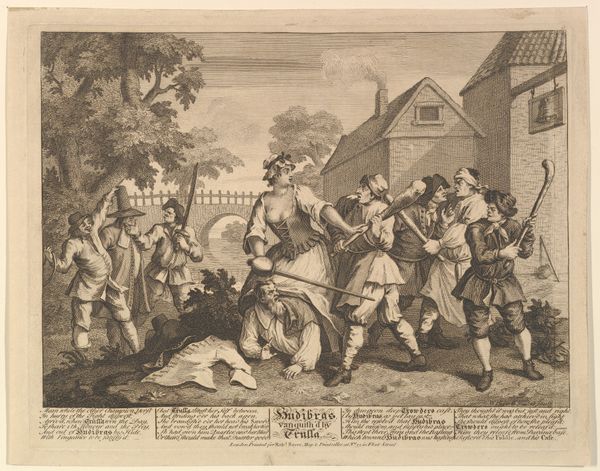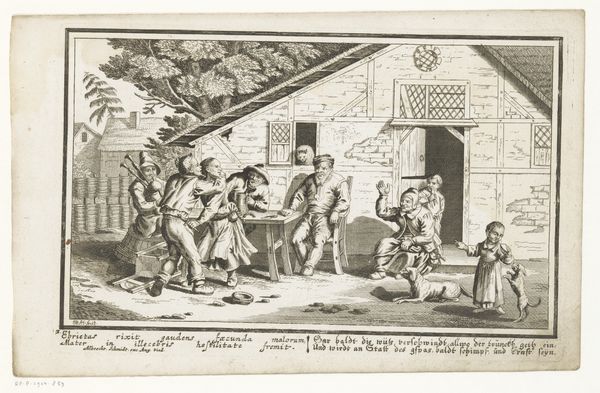
Sir Hudibras His Passing Worth the Manner How He Sallyed Forth (Plate 2: Illustrations to Samuel Butler's Hudibras) 1725 - 1730
0:00
0:00
drawing, print, engraving
#
drawing
# print
#
dog
#
landscape
#
figuration
#
horse
#
men
#
history-painting
#
engraving
Dimensions: Plate: 7 11/16 x 9 7/16 in. (19.5 x 23.9 cm) Sheet: 8 1/8 x 10 15/16 in. (20.7 x 27.8 cm)
Copyright: Public Domain
Curator: Ah, this is “Sir Hudibras His Passing Worth the Manner How He Sallyed Forth," a print by William Hogarth, created sometime between 1725 and 1730. It's an engraving, currently held at the Metropolitan Museum of Art. What do you make of it at first glance? Editor: My initial thought? Don Quixote meets a particularly scruffy dog walker. The lines are so precise, but there's a real looseness in the composition that hints at some satirical narrative unfolding. Curator: Absolutely! Hogarth was a master of visual storytelling. This piece is actually one in a series illustrating Samuel Butler’s satirical poem, “Hudibras." It mocks the English Puritans, specifically targeting their perceived hypocrisy. Editor: Okay, the high hats make more sense now— definitely Puritanical garb. Look at the figures: The dog practically leaps off the page. Hogarth uses line and form so purposefully— there's an implicit hierarchy to the characters based on their position and clarity, it seems. And you can read something in their faces: fear? Resignation? Disgust? Curator: Precisely. The titular character, Sir Hudibras, atop his horse, appears pompous and self-important, but if you read Butler's verses that accompany the image it challenges these figures and pokes fun at misguided adventures and inflated egos of this time period in England. Editor: This feels particularly relevant, doesn't it? Even now there are real parallels to contemporary political discourse, those loud voices and empty promises persist today. Curator: Yes, the poem itself satirizes religious zealotry, which Hogarth amplifies visually through the men’s absurd outfits and expressions. It feels so current even three centuries later! And beyond the satirical jabs, there is a beauty in the details and it invites contemplation and even a sense of humor that goes beyond pure polemic. Editor: Absolutely. Seeing this work underscores the importance of art that dares to question and subvert. Hogarth, through his wit, helps us dissect societal structures and assumptions, then and now. Curator: Hogarth makes one really sit with uncomfortable truths about humanity—we can so easily succumb to self-righteousness. A little introspection goes a long way. Editor: Indeed. Hogarth makes us aware that power unchecked, then or now, invites absurdity— and it needs art to reveal that.
Comments
No comments
Be the first to comment and join the conversation on the ultimate creative platform.
